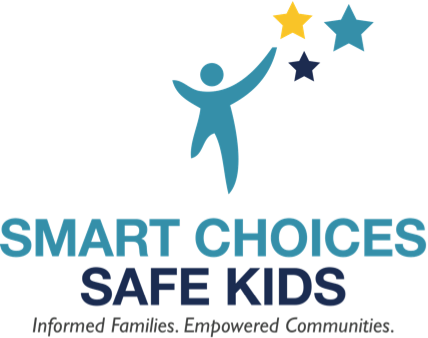Smoke-Free Zones
It's important to make sure that your home and other environments are smoke-free if you will be caring for babies or children.
Overview
+ Secondhand Smoke and Infants
When a pregnant women smokes, or when an infant is exposed to secondhand smoke from a cigarette, pipe, or any other smoking device, it increases the risk of Sudden Infant Death Syndrome (SIDS). SIDS is the sudden, unexplained, unexpected death of an infant in the first year of life, and it is the leading cause of death in otherwise healthy infants.
Chemicals in secondhand smoke can interfere with babies' breathing. Babies who die from SIDS have more nicotine in their lungs than babies who die from other causes.
If you are a parent who smokes, make sure that you:
- Don't smoke when pregnant.
- Don't smoke in the home or around the baby.
- Put the baby down to sleep on its back (click here for more information on safe sleeping positions).
+ Secondhand Smoke and Children
Secondhand smoke can also cause serious health problems in children, especially because their lungs are still growing.
Kids who breathe secondhand smoke can be affected in the following ways:
- They get sick more often, and they are more likely to get bronchitis and pneumonia.
- They are more likely to suffer from wheezing and coughing.
- Secondhand smoke can trigger an asthma attack for kids. Kids with asthma are especially sensitive to secondhand smoke.
- They get more ear infections and other ear issues.
- They can suffer from tooth decay.
To protect your kids (or kids that you care for), make sure you:
- Don't smoke around your kids.
- Don't allow anyone to smoke in or near your home -- or your car.
- Ensure that your kid’s day care and/or school is tobacco-free.
- Don't take your kids to public areas with heavy tobacco use.
+ Sources
Centers for Disease Control and Prevention. Health Effects of Secondhand Smoke. Atlanta: U.S. Department of Health and Human Services, Centers for Disease Control and Prevention, National Center for Chronic Disease Prevention and Health Promotion, Office on Smoking and Health, 2017 [accessed 2017 May 9]
American Academy of Pediatrics. The Dangers of Secondhand Smoke. Washington DC: American Academy of Pediatrics, Healthy Children, 2017 [accessed 2017 May 9].

